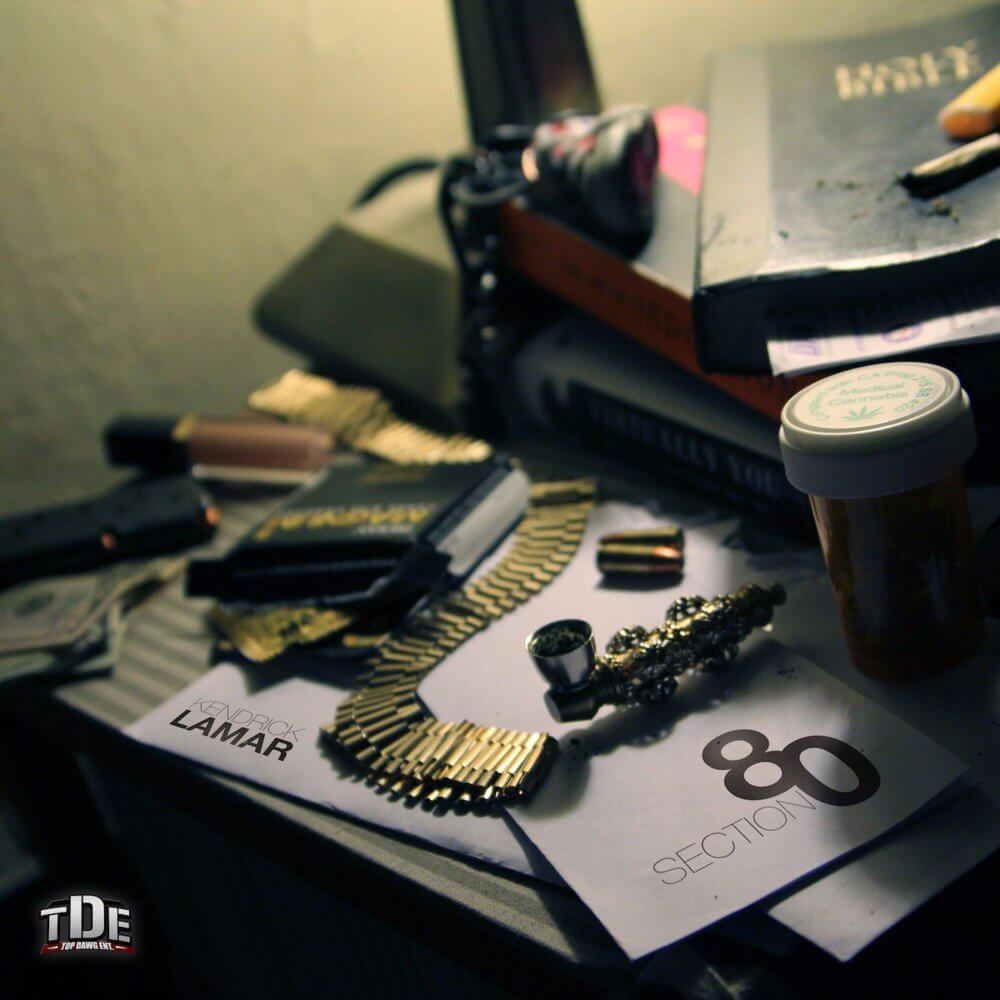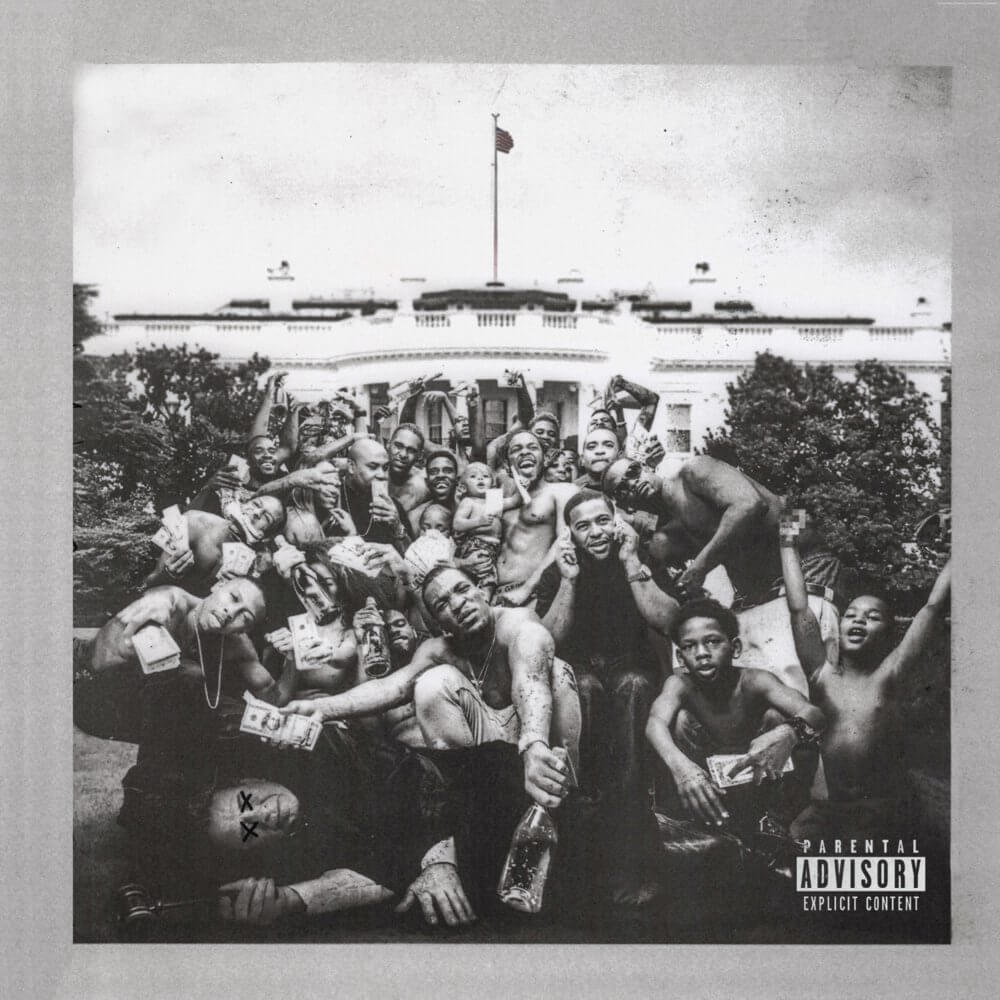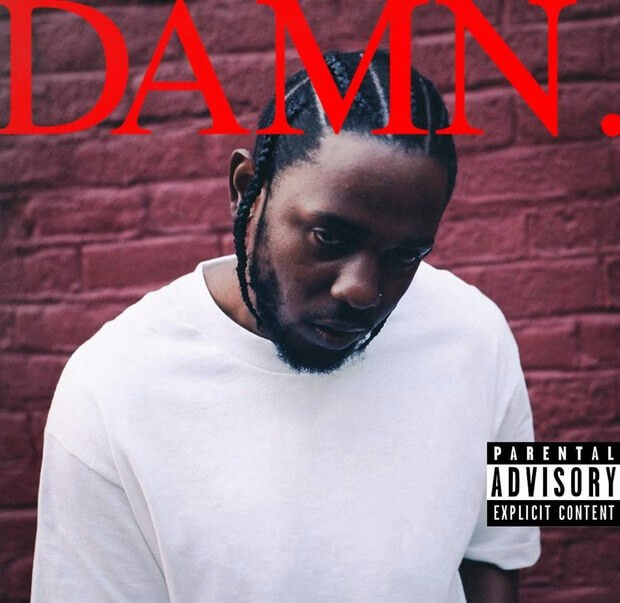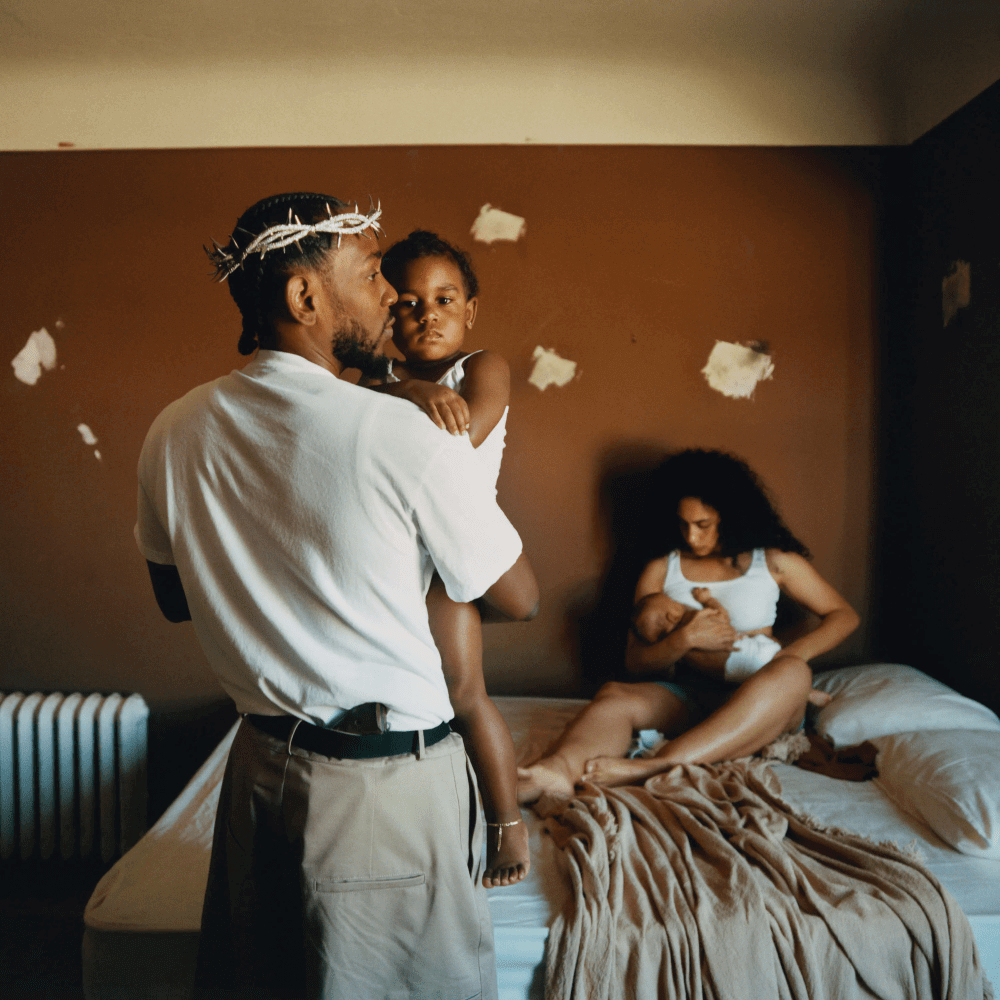Kendrick Lamar: From Compton to the Center of Culture
Kendrick Lamar Duckworth was born on June 17, 1987, in Compton, California. His upbringing in a neighborhood shaped by economic instability, police surveillance, and intergenerational trauma laid the groundwork for the themes he would explore across his discography. His parents had moved from Chicago to escape gang violence—only to find themselves in a different part of the same cycle. Kendrick grew up with a deep awareness of how systems affect everyday life, especially in communities like his own.
From early childhood, he was drawn to words. That pull became more focused after witnessing the filming of Tupac Shakur and Dr. Dre’s “California Love” music video in his neighborhood. He was only eight years old, but the moment stuck. He began writing verses soon after and carried notebooks filled with lyrics well into high school. At Centennial High School, Kendrick kept to himself and watched more than he spoke. That habit of close observation became a core part of his approach as a storyteller.
He released his first mixtape at the age of 16 under the name K-Dot. Youngest Head N***a in Charge (Hub City Threat: Minor of the Year) arrived in 2003 and quickly moved through local circles. The project landed him on the radar of Anthony “Top Dawg” Tiffith, founder of Top Dawg Entertainment (TDE), who began working with the teenage rapper in the early stages of his career. K-Dot continued developing his craft with mixtapes like Training Day (2005) and C4 (2009), while quietly building his confidence as a writer. Over time, he moved away from the K-Dot alias and started releasing music under his given name. That shift was more than stylistic—it reflected a deeper commitment to telling stories with clarity and weight.
Overly Dedicated and the TDE Foundation
Overly Dedicated dropped in 2010 and became a turning point. Released independently through TDE, the mixtape landed on the Billboard Heatseekers chart and generated widespread interest outside the West Coast. Tracks like “Ignorance Is Bliss” and “The Heart Pt. 2” explored power structures, internal contradictions, and the appeal of destructive choices, all from the perspective of someone trying to make sense of a rigged environment.
The success of Overly Dedicated led to a co-sign from Dr. Dre, who began mentoring Kendrick and brought him into the Aftermath/Interscope circle through a partnership with TDE. By then, Kendrick had already been working on his next album—a project that would introduce a wider audience to the world he came from.
Section.80: Building a World Through Precision
Released in 2011 through TDE, Section.80 was Kendrick’s first full-length independent album and the clearest signal yet of his long-form approach to storytelling. The project blends historical reference with personal testimony, threading together the experiences of an ’80s-born generation raised during Reaganomics, mass incarceration, and the war on drugs. “Ronald Reagan Era,” “Kush & Corinthians,” and “HiiiPoWeR” speak from within the systems they critique, refusing to flatten complex realities into slogans. Kendrick introduces recurring characters like Keisha and Tammy—young women caught in cycles of exploitation and despair—through narratives that avoid pity and push toward uncomfortable questions.
While some tracks carry the tone of a sermon, others lean into rhythm-driven wordplay, allowing him to stretch technically without losing focus. The production, handled in part by TDE’s in-house team Digi+Phonics, pulls from jazzy samples, moody synths, and slow-burning drums. Section.80 didn’t chart like his later releases, but it laid out the blueprint for how Kendrick would construct albums going forward—with each project acting less like a collection of songs and more like a study of a specific psychological and political space.
good kid, m.A.A.d city: Compton as a Memory and a Mirror
Released in 2012, good kid, m.A.A.d city is a tightly structured concept album set across a single day in Compton. Each song contributes to a larger narrative about peer pressure, religious guilt, police encounters, and the illusion of choice. The album doesn’t just tell Kendrick’s story—it captures how hard it is to break patterns that were in place before you were born.
Singles like “Swimming Pools (Drank),” “Backseat Freestyle,” and “Poetic Justice” found space on the radio while maintaining the album’s larger arc. The production team—featuring Dr. Dre, Just Blaze, and Pharrell among others—helped Kendrick shape a sonic backdrop that shifted between dreamlike and urgent without losing cohesion.
The album earned multiple Grammy nominations and eventually reached triple-platinum status. It connected across demographics without simplifying its message. Kendrick didn’t present himself as a hero. He portrayed himself as someone navigating decisions that felt increasingly impossible, and who managed to survive with a clearer perspective on what survival even means.
To Pimp a Butterfly: Expanding the Frame
By 2015, Kendrick had already become a national figure in Hip Hop. But To Pimp a Butterfly moved the conversation beyond genre. Built from sessions with musicians like Thundercat, Kamasi Washington, and Terrace Martin, the album drew from funk, jazz, and soul as much as it did rap. Lyrically, it moved from personal guilt to public confrontation. Songs like “King Kunta” and “The Blacker the Berry” took aim at American contradictions, while “u” and “i” explored the internal damage that often follows institutional violence.
The sequencing allowed for mood swings that mirrored the tensions in Kendrick’s writing. On one track he’s spiraling; on the next, he’s reaching for clarity. “Alright” became a protest anthem during Black Lives Matter demonstrations, not by design, but because it articulated hope in a moment that didn’t offer much of it.
The album was studied in college classrooms, discussed in op-eds, and picked apart by fans who saw its structure and message as something to engage with rather than just consume. It won Best Rap Album at the Grammys and challenged the genre’s commercial ceiling by refusing to be streamlined.
Untitled Unmastered and the Freedom in Drafts
In early 2016, Kendrick released Untitled Unmastered, a collection of demos from the To Pimp a Butterfly sessions. With no formal titles and minimal promotion, the release drew attention to the process behind his previous work. Tracks like “untitled 02 | 06.23.2014.” and “untitled 07 | 2014 – 2016” offered glimpses into unfinished ideas that carried the same weight as final cuts.
The project revealed how much Kendrick’s writing relies on experimentation—both sonically and structurally. Even without a central theme, the songs reflected the same tension between self-reflection and external pressure that shaped his earlier work. Untitled Unmastered debuted at No. 1 on the Billboard 200 and reinforced his ability to build interest without relying on conventional marketing cycles.
DAMN.: Sharp Lines and Rapid Fire
Released in 2017, DAMN. approached similar themes through a leaner format. The production leaned more toward trap and boom-bap, with input from Mike WiLL Made-It, The Alchemist, and Sounwave. Songs like “DNA.” and “HUMBLE.” cut straight through with compressed verses and pointed hooks. The writing here focused on contrasts—faith and pride, loyalty and survival, consequence and control.
The tracklist carried intentional ambiguity. Played in reverse, the order shifts the narrative arc. Kendrick confirmed this dual-structure theory in interviews, leaving fans to decode the meaning behind the format. “FEAR.,” one of the album’s most reflective songs, breaks down the different ways fear controls people at various stages of life—from childhood rules to adult paranoia.
DAMN. went triple platinum, won five Grammys, and became the first Hip Hop album to win the Pulitzer Prize for Music. The Pulitzer board described it as “a virtuosic song collection unified by its vernacular authenticity and rhythmic dynamism.”
Black Panther: The Album: Bridging Film and Rap
In 2018, Kendrick curated and executive produced Black Panther: The Album, the official companion to Marvel’s Black Panther. While it wasn’t a traditional soundtrack in the literal sense, it played a key role in shaping the film’s cultural weight. Collaborating with artists like SZA, Schoolboy Q, The Weeknd, and Jay Rock, Kendrick appeared on nearly every track while helping guide the creative direction behind the scenes.
“All the Stars” and “King’s Dead” became commercial hits, but the album’s deeper cuts—like “Paramedic!” and “Seasons”—reflected the same balance of urgency and storytelling that defined Kendrick’s solo work. The project earned multiple Grammy nominations and contributed to the larger conversation around Afrofuturism, global Black identity, and genre blending in contemporary Hip Hop.
Mr. Morale & The Big Steppers: Private Confession in a Public Format
After five years of minimal solo output, Kendrick returned in 2022 with Mr. Morale & The Big Steppers. Structured as a two-part album, the project steps away from external commentary and turns inward, focusing on therapy, fatherhood, infidelity, shame, and family patterns.
Songs like “Mother I Sober” and “Father Time” confront generational trauma without easy resolution. Kendrick works through his own contradictions, often exposing behavior that contradicts his public image. The writing resists simple takeaways. Instead, he frames the album as a kind of self-audit.
Production came from long-time collaborators like Sounwave and newcomers like Duval Timothy. Features from artists such as Beth Gibbons, Baby Keem, and Kodak Black drew mixed reactions—further proof that Kendrick was more interested in personal risk than critical comfort.
Mr. Morale & The Big Steppers won Best Rap Album at the 2023 Grammys and solidified his departure from traditional album cycles. It reads more like a therapy transcript than a commercial release, and that’s the point.
pgLang and the Next Chapter
In 2020, Kendrick co-founded pgLang with Dave Free, describing it as a multi-disciplinary media company. The platform defies easy definition. It’s a label, but also a creative collective. Its first major breakthrough came through Baby Keem, Kendrick’s cousin, who released The Melodic Blue with executive input from pgLang. The two collaborated on tracks like “family ties” and “range brothers,” continuing the back-and-forth delivery that traces back to Kendrick’s early storytelling style.
PgLang also launched short films, ads, and campaigns with global brands, hinting at a broader vision that stretches into film, fashion, and design. Kendrick’s next moves will likely run through this channel, with fewer announcements and more experimentation.
GNX: A Surprise Release Late in 2024
Released on November 22, 2024, GNX marks Kendrick Lamar’s sixth studio album and his first since departing Top Dawg Entertainment. The album comprises 12 tracks, running for 44 minutes and 20 seconds. Notable songs include “Squabble Up,” “TV Off,” and “Luther,” with the latter featuring uncredited vocals from SZA and sampling “If This World Were Mine” by Marvin Gaye, performed by Luther Vandross and Cheryl Lynn.
GNX debuted at number one on the Billboard 200 chart and received critical acclaim for its production and lyrical content . The album’s release was a surprise, with no prior promotion, and it was distributed through pgLang and Interscope Records.
2025: A Public Confrontation and a Bigger Stage
In early 2025, Kendrick broke months of silence with a direct lyrical shot at Drake, delivered through his guest verse on Metro Boomin and Future’s “Like That.” The verse reignited long-standing speculation about tension between the two, cutting through rap’s usual subtleties with sharp, unambiguous phrasing. The move sparked one of the most high-profile lyrical back-and-forths in recent Hip Hop memory. Listeners dissected bar-for-bar responses across singles and leaks, while the broader public watched a conversation about legacy, credibility, and longevity play out in real time.
Shortly after, Kendrick made a brief but talked-about appearance during the Super Bowl LVIII halftime performance. Without any prior announcement, he joined Dr. Dre and Snoop Dogg onstage in Las Vegas for an updated segment of “m.A.A.d city,” creating one of the most replayed moments of the night. His presence there, though brief, acted as a reminder that even without a new solo album, his movements carry weight.
At the same time, Kendrick announced an upcoming joint tour under pgLang, featuring SZA in a headlining role. Framed as something more fluid than a traditional concert series, the project is expected to blend performance, visual storytelling, and curated experiences tied to both artists’ catalogs. Whether this leads into new solo material or another collaborative release, Kendrick appears to be choosing impact over frequency—once again.









































































































































